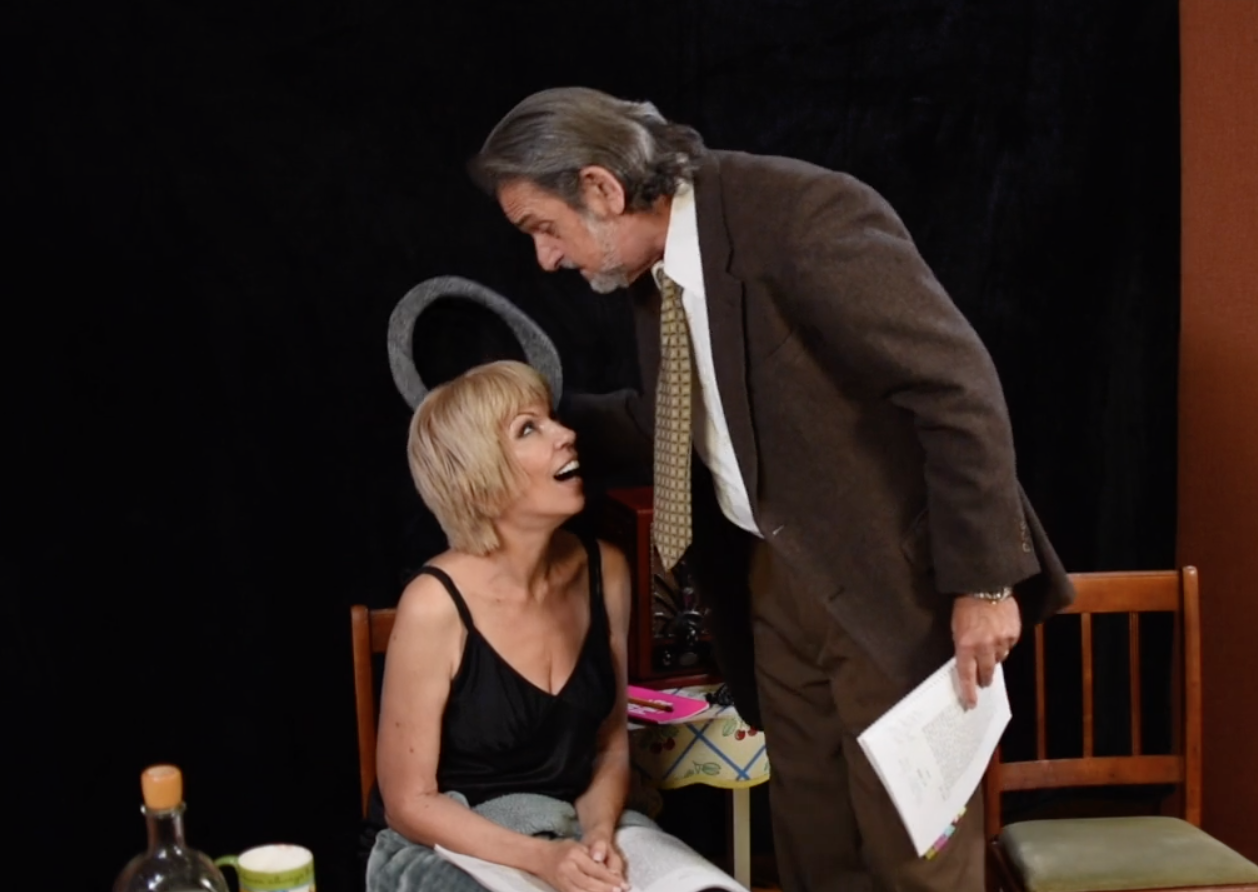Written by Brian McMillan
With just two actors and one director, what could go wrong?
That's what Annie Gaybis thought when she proposed "Two for the Seesaw" as the next play for City Repertory Theatre and the Palm Coast Arts Foundation. As it turned out, her co-star, Peter Gutierrez, and then the director, Limelight Theater founder Anne Kraft, were infected by COVID-19, and Kraft also had surgery as rehearsals continued.
"What could go wrong?" Gaybis wrote on anniegaybis.com. "It turns out: everything!"
But the show went on. Following the plan all along, St. Augustine's Eclipse Studio filmed the play, and it will be available to rent online Feb. 5-7 or Feb. 12-14 to support PCAF and CRT. Gaybis believes it's the only streaming theater performance available from Volusia to Jacksonville.
The play, which was written by William Gibson, was a hit on Broadway. It starred Henry Fonda and Anne Bancroft in 750 performances (Bancroft also won a Tony for the play) in the 1950s. In 1962, Robert Mitchum and Shirley MacLaine starred in a film version as the lead characters, Jerry and Gittel.
Gaybis has appeared in eight shows in the past 10 years in the area. She spoke with the Palm Coast Observer via Zoom on Jan. 28.

Some scenes in "Two for the Seesaw" feel like comedy, others like drama. What do you think it does best?
I think it's a play that has everything. It'll make you laugh, it will tug at your heart, and hopefully you will relate to some of the combustible moments that happen.
Most interesting thing about this play is even though it was written in the 1950s, it's like the song in "Casablanca": "The world will always welcome lovers as time goes by."
I pay Gittel, a dancer in between shows in New York, who meets this lawyer from Nebraska (Jerry) who knows no one in New York, who's going through a traumatic divorce by his choice, and it shows how opposites can attract.
It's something, especially for Valentine's weekend.
The character Gittel Mosca is a dancer, and you also have a background in dancing. Do you feel any affinity to her?
I sent the play to my friends in New York and Los Angeles, and they both said, "This part was made for you."
Unfortunately, I'm a dancer that talks about dancing, but I don't dance in the play.
During this pandemic, while I have been ensconced, I put together my own YouTube channel with dance videos for anyone who would like to see. I dance away to everything from Cole Porter to "Hamilton".
Did you watch MacLaine's performances for inspiration, or do you consciously try to play the character differently?
I was inspired by it. When I read it, I felt some of the same nuances that I saw reflected in the way her character was presented (by MacLaine). When I saw the movie, I thought, "Wow, I'm going in the right direction, because it looks like she saw it the same way."
The play was filmed so that it could be broadcast for the watch party. How did that change the performance?
Once we got into the studio, Angie Bailey became the director of how we could move on camera. A couple of times, we had to do retakes to get a better camera angles, or if someone stumbled — because it was very close quarters.
Doing a play without an audience is a bit surreal.
How is it different to act in a play compared with a movie in general?
In a movie production, whatever takes place in that one location, they're going to film it there and not come back. Sometimes you can film the ending before you film the first scene, so you have to really get your emotions ready. You have to process that in the trailer while you're getting ready.
In a play, there's a beginning, middle and end.
I've had some small parts in a television show where all I would get is the sides (pages from a script that actors are given to learn for an audition), and that's the only thing you know. You don't know the connection to the series, and you just have to figure out the best way to interpret that for a reading in front of a casting director.
In 1962's "Two for the Seesaw," the character Jerry tries to pick up Gittel using some sexist phrases like "the weaker sex." Do you feel the play is dated, or does it feel contemporary?
Do you think anything has changed? (Laughs) You tell me.
I think it feels very contemporary: Women are still very conscious of their figures and their faces, and men are very observant of women's figures and their faces.
Later in the play, Jerry is very appreciative of (Gittel's) mind because when she would say, "I'm not as smart as you," he would say, "You're wiser than me in so many ways"
What is your process for becoming a character?
James Cagney said that to act, you stand in front of the person, point your feet forward, and you speak your lines like you mean them.
I don't have this inner Stanislavski Method of what I always go through. I read the script, and I really think about it, maybe thinking about what this character was like if she was picking out flowers or picking out a movie to see, or where would be her favorite place to eat. The more you think about the character, certain things light up in your head.